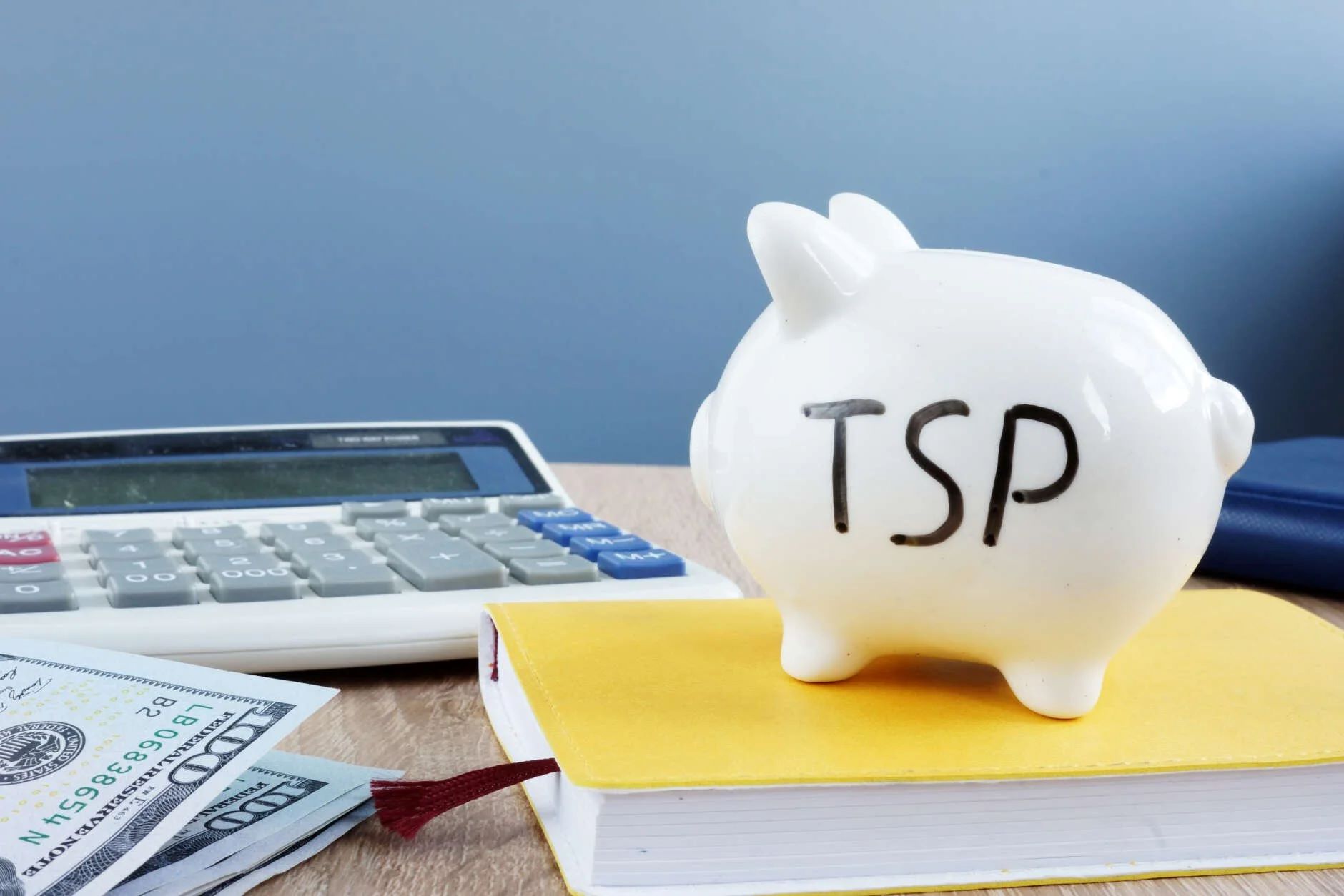

Finance
What Is A Buyer Credit At Closing
Published: January 13, 2024
Learn all about buyer credit at closing and how it can help finance your real estate purchase. Discover the benefits and considerations.
(Many of the links in this article redirect to a specific reviewed product. Your purchase of these products through affiliate links helps to generate commission for LiveWell, at no extra cost. Learn more)
Table of Contents
- Introduction
- Definition of Buyer Credit at Closing
- Purpose of a Buyer Credit at Closing
- Negotiating a Buyer Credit at Closing
- Typical Uses of Buyer Credit at Closing
- Advantages and Disadvantages of Buyer Credit at Closing
- How to Determine the Amount of Buyer Credit at Closing
- Documentation and Processes Involved in Buyer Credit at Closing
- Potential Risks and Precautions for Buyer Credit at Closing
- Conclusion
Introduction
In the world of real estate transactions, there are various financial components that both buyers and sellers need to consider. One such component is the buyer credit at closing. This financial arrangement allows the buyer to receive a credit from the seller to offset certain costs associated with the purchase of the property. While buyer credits at closing can provide financial relief to the buyer, it is important to understand the ins and outs of this arrangement before making any agreements.
In this article, we will explore what exactly a buyer credit at closing is, its purpose, how to negotiate it, and the documentation and processes involved. Additionally, we will discuss the potential advantages and disadvantages of utilizing a buyer credit, as well as provide insight into how the amount of the credit is determined.
By delving into these details, buyers will be better equipped to make informed decisions regarding buyer credits at closing, ultimately ensuring a smooth and financially viable real estate transaction.
Definition of Buyer Credit at Closing
A buyer credit at closing, also known as a seller concession, is a financial arrangement in a real estate transaction where the seller agrees to provide a credit to the buyer to help cover certain costs associated with the purchase of the property. These costs may include closing costs, prepaid expenses, or even repairs that need to be addressed before the buyer takes possession of the property.
Essentially, the seller is offering a financial incentive to the buyer, reducing the amount of money the buyer needs to pay upfront. This credit is typically agreed upon during the negotiation phase of the contract and is reflected on the final closing statement.
It’s important to note that a buyer credit is different from a price reduction. In a price reduction, the seller lowers the agreed-upon purchase price of the property. On the other hand, with a buyer credit at closing, the purchase price remains the same, but the seller provides a credit towards certain expenses.
The buyer credit at closing is just one of the many elements that can be negotiated between the buyer and seller in a real estate transaction. It is important for both parties to carefully consider and discuss the terms and conditions of the credit to ensure they are in agreement.
Now that we have defined what a buyer credit at closing is, let’s explore the purpose and benefits of this financial arrangement in the next section.
Purpose of a Buyer Credit at Closing
The purpose of a buyer credit at closing is to provide financial relief to the buyer and help alleviate some of the upfront costs associated with purchasing a property. It can be a valuable tool for buyers who may be facing financial constraints or who want to preserve their cash for other purposes.
One of the primary purposes of a buyer credit at closing is to cover the closing costs. Closing costs are fees and expenses that buyers are required to pay in order to complete the real estate transaction. These costs can include loan origination fees, title insurance premiums, appraisal fees, attorney fees, and more. By receiving a credit for these costs, buyers can minimize their out-of-pocket expenses at the time of closing.
In addition to closing costs, buyer credits at closing can also be used to offset other expenses, such as prepaid items. Prepaid items can include property taxes, homeowner’s insurance premiums, and mortgage insurance. These costs are often paid upfront by the buyer and can add a substantial amount to the overall cost of purchasing a property. By applying a credit towards these expenses, buyers can reduce their immediate financial burden.
Furthermore, buyer credits at closing can also be used to address any necessary repairs or improvements that were identified during the inspection process. It is common for buyers to negotiate with the seller to provide a credit that covers the cost of these repairs or to have the seller complete the repairs prior to closing. This ensures that the property is in the desired condition before the buyer takes possession.
Overall, the purpose of a buyer credit at closing is to make the home buying process more accessible and affordable for buyers. It allows them to manage their finances more effectively and reduces the financial strain associated with upfront costs. However, it is important for buyers to carefully consider the potential advantages and disadvantages of utilizing a buyer credit at closing, which we will explore in the next section.
Negotiating a Buyer Credit at Closing
When it comes to negotiating a buyer credit at closing, it is important for both the buyer and seller to approach the process with clear communication and a thorough understanding of their respective positions. Here are some key factors to consider when negotiating a buyer credit:
- Market Conditions: The current state of the real estate market can impact the negotiations. In a seller’s market where competition is high, sellers may be less inclined to offer a buyer credit. On the other hand, in a buyer’s market where inventory is high, buyers may have more leverage in negotiating a credit.
- Property Condition: If the property requires repairs or improvements, the buyer can negotiate a credit to cover these costs. However, the extent of the repairs and their impact on the property’s value will play a role in the amount of credit that can be negotiated.
- Closing Costs: Buyers can negotiate a credit to cover a portion or all of the closing costs. It is important for buyers to have a clear understanding of these costs and to negotiate a credit that aligns with their financial situation.
- Buyer’s Financial Position: The buyer’s financial situation, including their down payment amount, credit score, and ability to secure financing, can impact the negotiations. Sellers may be more willing to offer a credit if they feel confident in the buyer’s ability to close the transaction.
- Seller’s Motivation: Understanding the seller’s motivation can also influence the negotiations. If the seller is eager to close the deal quickly or has other motivating factors, they may be more inclined to offer a credit to sweeten the deal.
During the negotiation process, it is essential for both parties to be open to compromise and to seek a win-win outcome. Clear communication, transparency, and effective negotiation skills are key to reaching an agreement on the buyer credit at closing.
Once a credit is agreed upon, it is important to document all the terms and conditions of the credit in the purchase agreement. This will ensure that both parties are on the same page and that the credit is appropriately applied at the time of closing.
In the next section, we will explore the typical uses of a buyer credit at closing, providing insight into how this financial arrangement can benefit buyers.
Typical Uses of Buyer Credit at Closing
A buyer credit at closing can be used for various purposes to assist buyers in managing the costs associated with purchasing a property. Here are some typical uses of a buyer credit:
- Covering Closing Costs: One of the most common uses of a buyer credit is to offset the closing costs. These costs include fees such as appraisal fees, loan origination fees, title insurance premiums, and attorney fees. By receiving a credit, buyers can reduce the amount of money they have to pay upfront, making the transaction more affordable.
- Addressing Repairs and Improvements: Another typical use of a buyer credit is to cover the costs of necessary repairs or improvements identified during the inspection process. Buyers may negotiate a credit to either complete the repairs themselves or have the seller address the issues before the closing. This ensures that the property is in the desired condition before the buyer takes ownership.
- Offsetting Prepaid Expenses: Prepaid expenses, such as property taxes, homeowner’s insurance premiums, and mortgage insurance, can add a significant amount to the buyer’s upfront costs. A buyer credit at closing can be used to offset these expenses, reducing the immediate financial burden on the buyer.
- Lowering Cash Needed at Closing: By utilizing a buyer credit, buyers can reduce the amount of cash they need to bring to the closing table. This can be especially beneficial for buyers who may be tight on cash or who want to preserve their funds for other purposes, such as moving costs or furnishing the new property.
- Flexibility in Financing: A buyer credit can also provide buyers with more flexibility in their financing options. By reducing the upfront costs, buyers may have more options when it comes to their loan terms or down payment amount, potentially making the transaction more feasible.
It is important to note that the specific uses of a buyer credit at closing will depend on the agreement reached between the buyer and seller. The terms and conditions of the credit should be clearly outlined in the purchase agreement to ensure both parties are in agreement. This will help avoid any misunderstandings or disputes during the closing process.
In the next section, we will explore the advantages and disadvantages of utilizing a buyer credit at closing, allowing buyers to weigh the pros and cons before deciding on this financial arrangement.
Advantages and Disadvantages of Buyer Credit at Closing
Utilizing a buyer credit at closing can offer several advantages for buyers. However, it is important to consider the potential disadvantages as well. Here are some key advantages and disadvantages to consider:
Advantages:
- Reduced Upfront Costs: One of the main advantages of a buyer credit at closing is that it reduces the amount of money the buyer needs to pay upfront. By offsetting closing costs, repairs, or prepaid expenses, buyers can conserve their cash and allocate it to other important expenses.
- Increased Affordability: With lower upfront costs, a buyer credit at closing makes the overall transaction more affordable for buyers, especially those who may be on a tight budget. It allows buyers to proceed with the purchase without stretching their finances too thin.
- Flexibility in Financing: By reducing upfront costs, a buyer credit can offer buyers more flexibility in their financing options. Buyers may have more flexibility in choosing loan terms or down payment amounts, making the transaction more feasible for them.
- Negotiating Power: A buyer credit at closing can provide buyers with additional leverage during negotiations. If a property requires repairs or has other issues, the buyer can negotiate for a credit that reflects the cost of necessary improvements, giving them more control over the transaction.
Disadvantages:
- Potential for Higher Purchase Price: Sellers may factor in the buyer credit when setting the purchase price. If the seller is offering a substantial credit, they may adjust the listing price of the property accordingly. Buyers should be cautious and ensure the overall cost of the property is fair and accurately reflects its value.
- Appraisal and Lending Considerations: Depending on the terms of the buyer credit, it could potentially impact the appraisal of the property. If the appraised value comes in lower than the agreed-upon purchase price, it could affect the buyer’s ability to secure financing for the transaction.
- Impact on Seller’s Proceeds: Offering a buyer credit at closing can reduce the seller’s proceeds from the sale. Sellers need to carefully consider the financial implications of offering a credit and ensure it aligns with their own financial goals.
- Complex Negotiations: Negotiating a buyer credit at closing requires clear communication and effective negotiation skills. Both the buyer and seller need to reach a mutually beneficial agreement, and this process can sometimes become complicated or contentious.
It’s important for buyers to carefully weigh the advantages and disadvantages of utilizing a buyer credit at closing. Considering their individual circumstances, financial goals, and the specific terms of the credit, buyers can make an informed decision on whether a buyer credit is the right option for their real estate transaction.
Next, we will explore how the amount of a buyer credit at closing is determined, helping buyers understand the factors that influence this financial arrangement.
How to Determine the Amount of Buyer Credit at Closing
The amount of a buyer credit at closing is typically determined through negotiation between the buyer and the seller. Several factors come into play when determining the appropriate amount for the credit. Here are some key considerations:
- Closing Costs: One factor that influences the amount of the buyer credit is the total closing costs associated with the transaction. Both the buyer and seller should have a clear understanding of the estimated closing costs and work towards a credit that adequately covers these expenses.
- Repairs and Improvements: If there are any necessary repairs or improvements that need to be addressed, the cost of these repairs can be a determining factor in the amount of the credit. The buyer and seller should agree on the estimated cost of the repairs and negotiate a credit that reflects this cost.
- Property Condition: The condition of the property can impact the negotiation of the credit. If the property requires significant repairs or updates, it may warrant a larger credit. However, if the property is in good condition or the repairs needed are minimal, the credit amount may be smaller.
- Market Conditions: The state of the real estate market can also play a role in determining the credit amount. In a competitive sellers’ market, where multiple offers may be present, sellers may be less inclined to offer a substantial credit. In a buyers’ market, where inventory is high, buyers may have more leverage in negotiating a higher credit.
- Seller’s Motivation: The seller’s motivation to close the transaction quickly or to address any issues promptly can influence the negotiation of the credit. A motivated seller may be more willing to provide a higher credit to attract a buyer and facilitate a smooth transaction.
It is important for both parties to conduct thorough research, gather estimates, and consider all relevant factors when determining the amount of the buyer credit. Clear and open communication is key to reaching an agreement that satisfies both the buyer and the seller.
Once the amount is determined, it is crucial to document the details of the buyer credit in the purchase agreement to ensure both parties are on the same page. This will help avoid any confusion or disputes during the closing process.
In the next section, we will explore the documentation and processes involved in a buyer credit at closing, providing an overview of what buyers can expect during this phase of the real estate transaction.
Documentation and Processes Involved in Buyer Credit at Closing
When it comes to a buyer credit at closing, there are specific documentation and processes involved to ensure a smooth and well-documented transaction. Here are the key details to be aware of:
1. Purchase Agreement: The buyer credit at closing should be clearly outlined in the purchase agreement. This agreement serves as a legally binding contract between the buyer and the seller and should include the agreed-upon amount of the credit, any conditions or contingencies, and the terms of the credit.
2. Closing Disclosure: The closing disclosure is a document provided by the lender that outlines all the financial details of the transaction, including the final closing costs and any credits or adjustments. The buyer credit at closing will be reflected on this document, ensuring transparency and accuracy.
3. Closing Statement: The closing statement, also known as the HUD-1 or ALTA statement, provides a detailed breakdown of all the financial aspects of the transaction. This document includes the credit amount and how it is applied towards closing costs, repairs, or other agreed-upon expenses.
4. Verification of Credit: The seller may request documentation or verification of the expenses being covered by the buyer credit. This could include estimates for repairs or invoices for prepaid expenses. Providing necessary documentation helps ensure both parties have a clear understanding of how the credit is being utilized.
5. Communication with Lender: If a buyer credit affects the loan amount or terms, it is important to communicate with the lender throughout the process. The lender may require additional documentation or may need to adjust the terms of the loan to reflect the credit.
6. Closing Process: During the closing process, the buyer, seller, real estate agents, and any other relevant parties will convene to sign the necessary documents and complete the transfer of ownership. The buyer credit will be accounted for on the closing statement, and the credited amount will be deducted from the final amount due from the buyer.
It is crucial to work with a knowledgeable real estate agent, attorney, or title company to ensure that all the necessary documentation is prepared accurately and in compliance with local and state regulations. These professionals can guide you through the process, explain the required documents, and ensure that the buyer credit at closing is properly documented and accounted for.
In the next section, we will explore the potential risks and precautions to consider when utilizing a buyer credit at closing to make informed decisions and avoid any pitfalls.
Potential Risks and Precautions for Buyer Credit at Closing
While a buyer credit at closing can offer financial benefits, it is important for buyers to be aware of potential risks and take necessary precautions when utilizing this arrangement. Here are some important considerations:
- Overestimating Repairs: Buyers should exercise caution when negotiating a credit for repairs. Overestimating the repair costs may lead to a higher credit amount, which could potentially increase the purchase price of the property. It is crucial to obtain accurate estimates from reliable contractors or professionals before finalizing the credit.
- Impact on Financing: Buyers should keep in mind that a larger credit may affect the financing process. Lenders will consider the credit in their loan-to-value calculations, which could impact the loan terms, required down payment, or the ability to secure financing. It’s essential to consult with the lender to understand any potential implications.
- Appraisal Challenges: The buyer credit could affect the appraisal value of the property. If the credit is not appropriately justified or if it increases the purchase price, it may result in a lower appraised value. This could lead to challenges in obtaining a loan for the full purchase price. Buyers should be prepared for potential appraisal issues and have contingency plans in place if needed.
- Seller Cooperation: Depending on the seller’s motivation and circumstances, they may or may not be willing to provide a buyer credit. Buyers should assess the willingness and financial capacity of the seller to honor the credit agreement. It’s crucial to have clear communication and a detailed agreement in place to avoid any conflicts.
- Proper Documentation: Accurate documentation and clear communication are key to avoiding misunderstandings or disputes. Buyers should ensure that the buyer credit at closing is properly documented in the purchase agreement, closing statement, and other relevant documents. This will help avoid any confusion and ensure both parties are in agreement regarding the credit amount and its application.
- Seek Professional Guidance: Real estate transactions can be complex, and it is advisable to seek professional guidance from real estate agents, attorneys, or title companies. These experts can provide valuable advice, review the terms and documentation, and help protect your interests throughout the process.
By being aware of these potential risks and taking the necessary precautions, buyers can navigate the buyer credit at closing process more effectively and mitigate any potential pitfalls. It is essential to conduct thorough research, communicate openly, and consult with experts to ensure a successful and financially sound real estate transaction.
Next, let’s conclude by summarizing the key points we have covered in this article.
Conclusion
Utilizing a buyer credit at closing can be a beneficial financial arrangement for buyers in a real estate transaction. It offers the opportunity to reduce upfront costs, address repairs, and make the overall purchase more affordable. However, it is important for buyers to approach this process with careful consideration and take necessary precautions to ensure a smooth transaction.
In this article, we explored the definition of a buyer credit at closing and its purpose in providing financial relief to buyers. We discussed the steps involved in negotiating a buyer credit, typical uses for the credit, and the advantages and disadvantages of utilizing this arrangement.
To determine the appropriate amount of a buyer credit, factors such as closing costs, repairs, property condition, market conditions, and seller motivation need to be considered. It is crucial to document the credit in the purchase agreement, closing statement, and other relevant documents to avoid misunderstandings and disputes.
We also highlighted the potential risks associated with a buyer credit, such as overestimating repairs, potential impacts on financing and appraisals, and the importance of proper documentation. Seeking professional guidance throughout the process is highly recommended to ensure a successful and well-informed transaction.
By understanding the ins and outs of a buyer credit at closing, buyers can make confident decisions, negotiate effectively, and navigate the real estate transaction process with greater ease. With careful planning and execution, a buyer credit can be a valuable tool to help buyers achieve their homeownership goals.
Remember, each real estate transaction is unique, and it is important to consult with professionals and thoroughly analyze your specific circumstances before making decisions regarding a buyer credit at closing.














